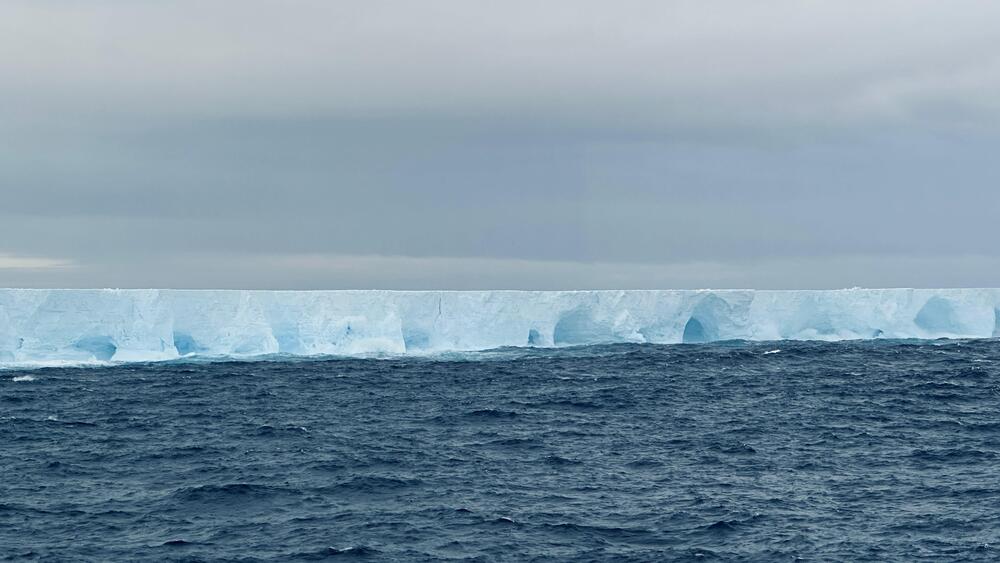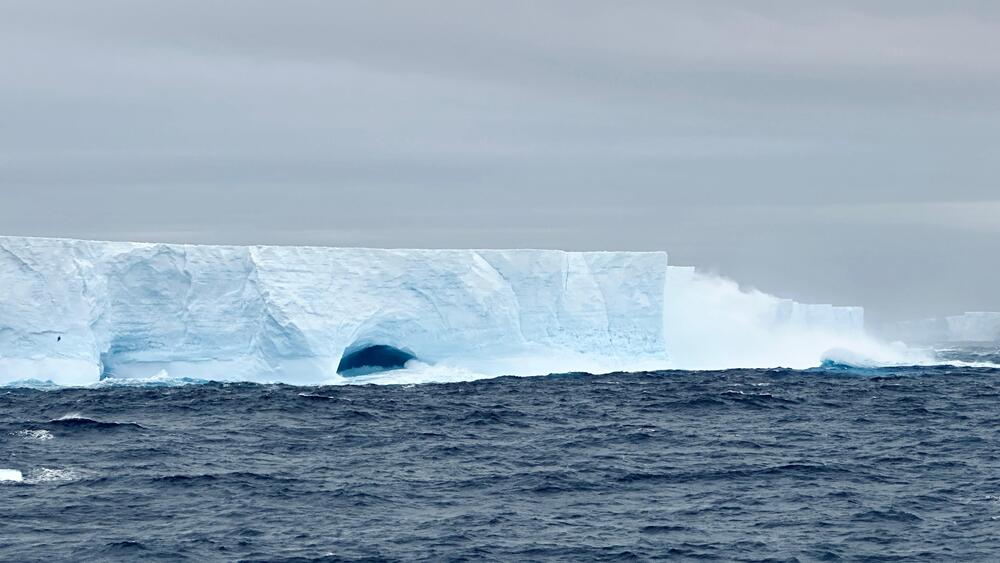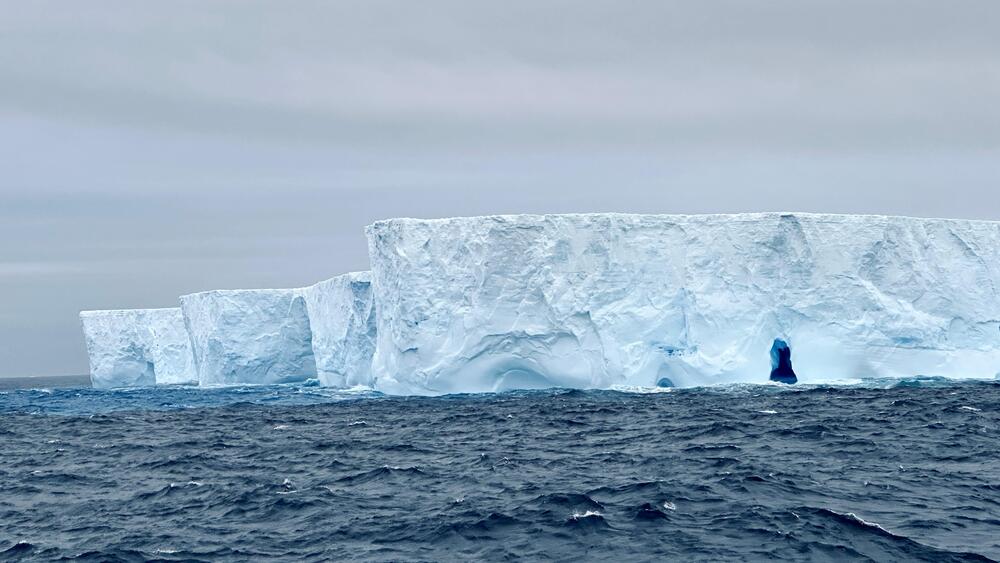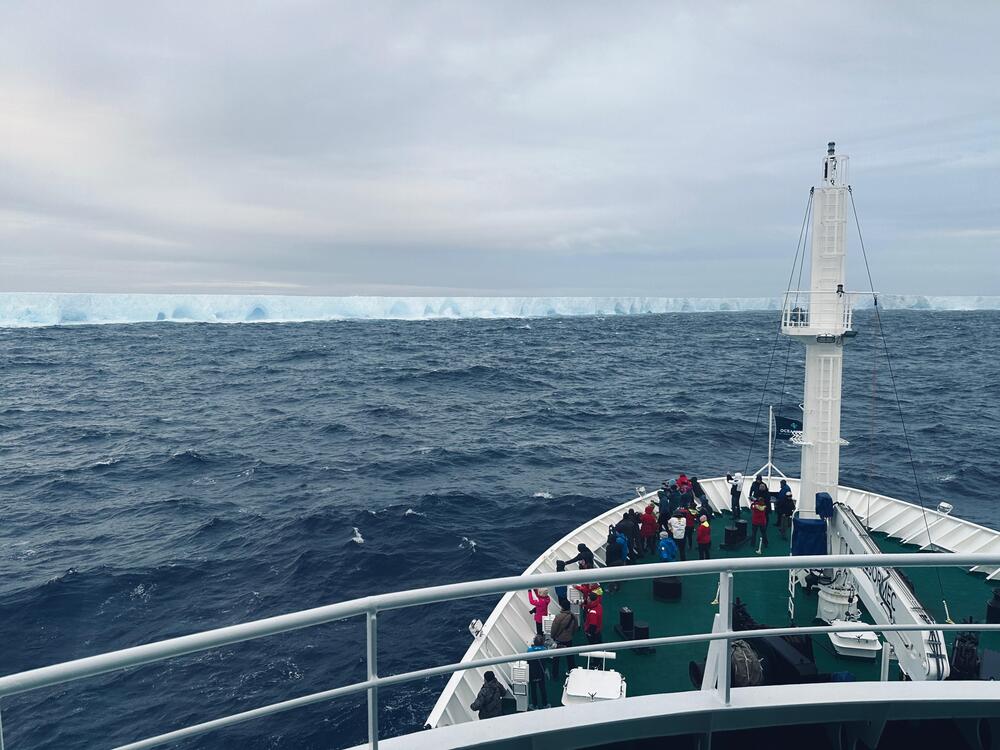Our 2025 expedition to South Georgia and Tristan da Cunha got an unexpected highlight: sailing along the immense iceberg A23a. This behemoth, one of the largest icebergs in history, has been drifting towards South Georgia after decades of being grounded on the Antarctic seabed. Seeing it up close was a unique experience, reminding us just how dynamic and powerful our planet’s polar regions are.
What is Iceberg A23a?
A23a is a true giant of the Southern Ocean. Originally part of the Filchner Ice Shelf, it calved in 1986 but remained grounded on the seabed for nearly 40 years. In 2020, it finally broke free and began its slow drift into the open ocean, measuring around 3,500 square kilometres (roughly the size of Mallorca).
Using the ship’s sextant, we measured A23a’s cliffs at an astonishing 67 metres, further emphasizing its sheer magnitude. It dwarfed even our expedition vessel as we navigated its icy perimeter. But as with all icebergs, most of its mass lies hidden beneath the surface, an unseen frozen colossus extending into the depths – some 280-metres deep, almost the height of the Eiffel Tower. Can you imagine the sheer volume of ice lurking below?
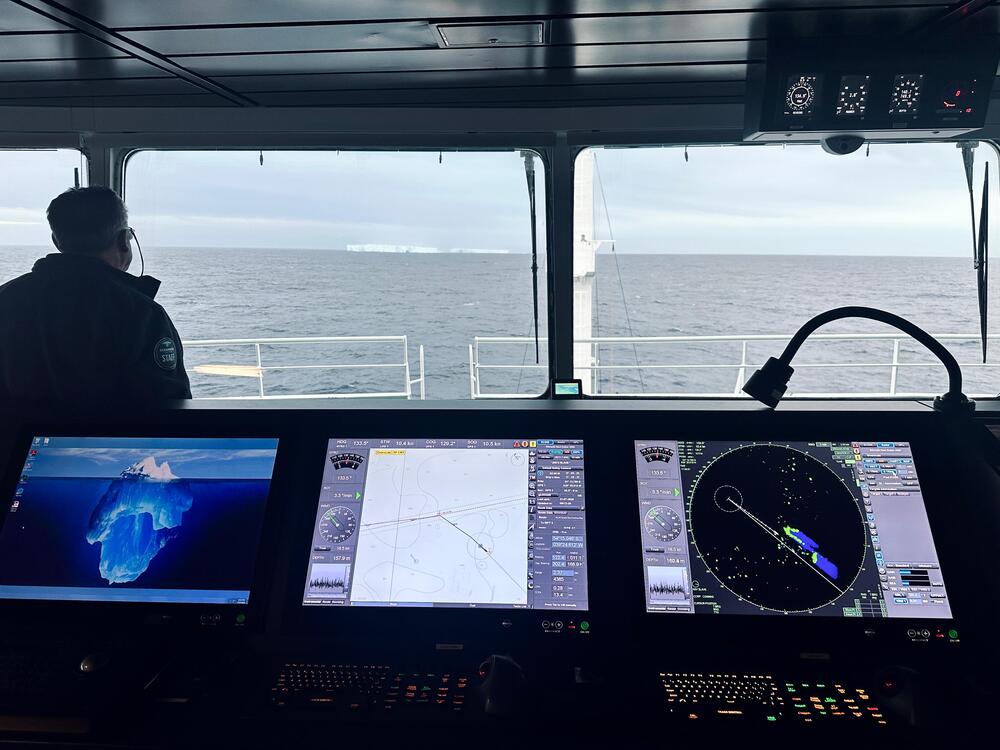
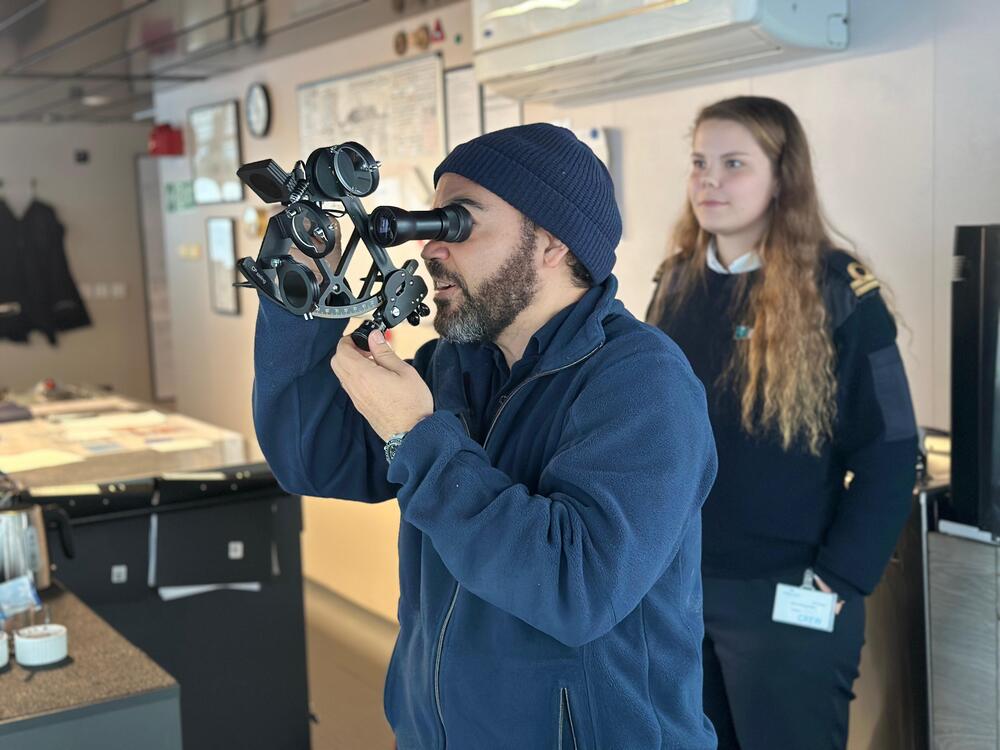
The name “A23a” follows the Antarctic iceberg naming system. Icebergs are classified by the quadrant in which they were first recorded: “A” designates the Bellingshausen/Weddell Sea sector. The number “23” means it was the 23rd iceberg recorded in that quadrant, and “a” signifies that it is the first major piece of this particular iceberg.
A Frozen World on the Move
Sailing along A23a, we were struck by its sheer scale. The stark white of its ice contrasted sharply with the deep blue of the surrounding waters, and in places, the surface had been sculpted into intricate ridges and crevasses. We witnessed the relentless waves of the Southern Ocean crashing against its walls, slowly eating away at its edges and shaping its final journey.
As we approached the iceberg, we could feel an immediate drop in temperature. The sheer size of iceberg A23a creates its own microclimate, chilling the surrounding air and making the cold even more biting.
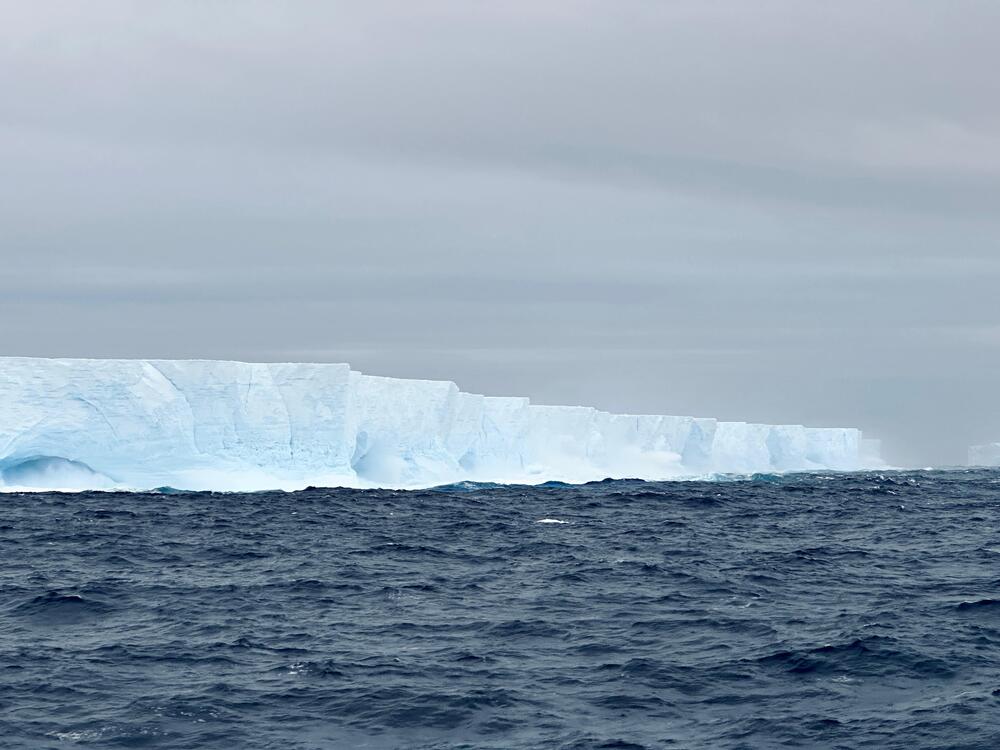
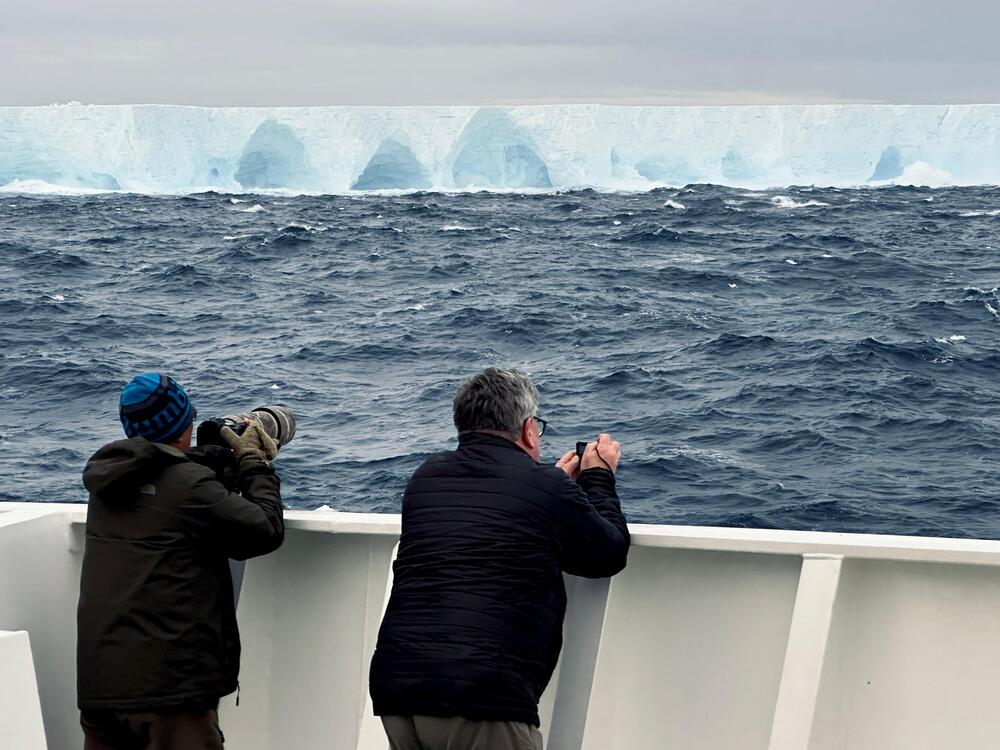
Despite its icy isolation, Iceberg A23a is far from lifeless. Seabirds, including petrels and albatrosses, soared above the berg. The region’s nutrient-rich waters also attract krill, meaning it could even become a temporary feeding ground for whales as it drifts further north.
Other Famous Icebergs
A23a isn’t the only colossal iceberg to make headlines. In recent years, A68a, a 5,800-square-kilometre giant, broke off from the Larsen C Ice Shelf in 2017 and drifted toward South Georgia before disintegrating. Another famous iceberg, B15, calved from the Ross Ice Shelf in 2000 and was, at the time, the largest iceberg ever recorded, covering around 11,000 square kilometres – almost the size of Jamaica. These massive icebergs provide valuable insight into climate patterns, ocean circulation, and the ever-changing Antarctic environment.
What’s Next for Iceberg A23a?
There were initial concerns that A23a would collide with the South Georgia Islands, posing a potential risk to local wildlife and ecosystems. However, it now appears to have become stranded once again, at least temporarily, slowing its progress through the Southern Ocean. The fate of A23a remains uncertain, whether it will refloat and continue drifting or gradually break apart where it stands. If it follows the path of previous mega-icebergs, it could influence ocean currents, impact marine ecosystems, or even disrupt shipping routes.
For us, witnessing this colossal iceberg up close was an unforgettable moment, one of those rare travel experiences that put into perspective the vast, ever-changing forces shaping our planet. As we sailed onward toward the South Georgia islands we carried with us a newfound appreciation for the raw beauty of the Antarctic’s icy frontiers.
